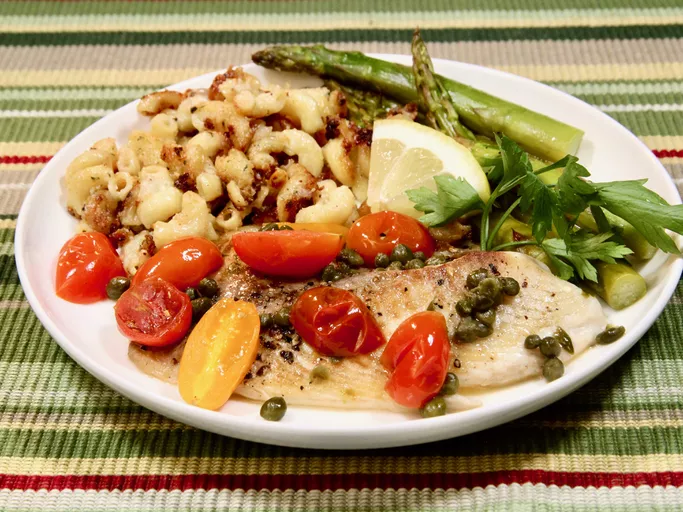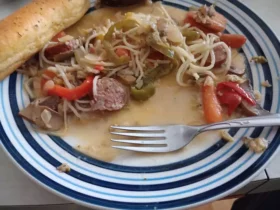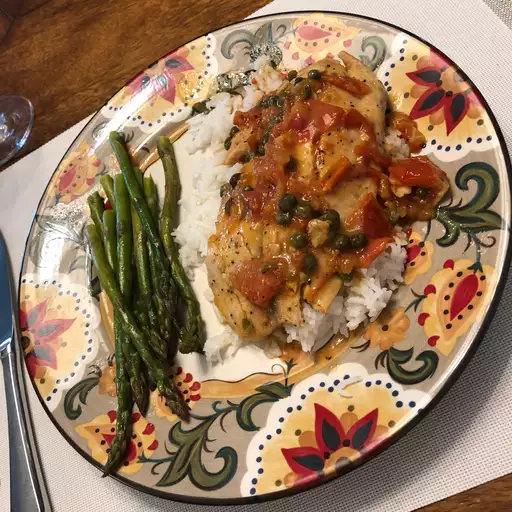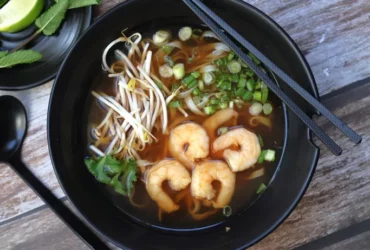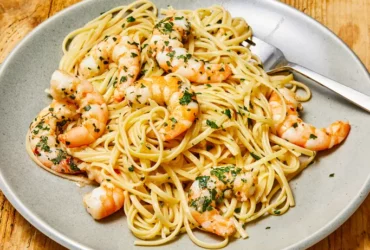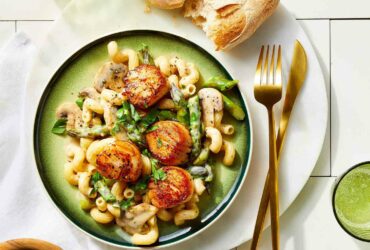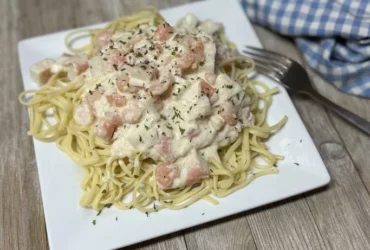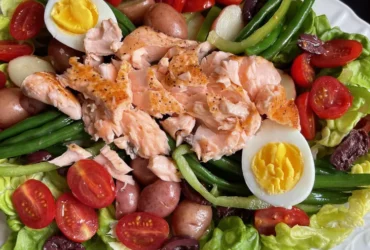Ingredients and Preparation
Basic Ingredients
The basic ingredients for an easy tilapia recipe are straightforward and can be found at most supermarkets or fish markets.
- Tilapia fillets – You will need 4-6 tilapia fillets, depending on their size and serving requirements.
- Olive oil – Use a good quality olive oil for cooking the tilapia. Olive oil is suitable for high-heat cooking and adds a mild flavor to the fish.
- Garlic – Mince two cloves of garlic per tilapia fillet. You can use more or less depending on your taste preference.
- Herbs – Chopped fresh herbs like parsley, dill, or thyme are great additions to tilapia. Choose one herb and chop about 1 tablespoon for each fillet.
- Lemon juice – Freshly squeezed lemon juice is essential for the best flavor. Use about 2 tablespoons of lemon juice per tilapia fillet.
- Paprika – Paprika adds a mild smoky flavor to the dish. Use about half a teaspoon of paprika per fillet.
- Salt and pepper – These are essential seasonings for any dish, including tilapia. Add salt and pepper to taste.
- Cayenne pepper (optional) – If you like spicy food, add a pinch of cayenne pepper to the fish. Start with a small amount and adjust to your taste.
- The Easy Tilapia Recipe requires minimal ingredients to achieve a delicious dish that’s perfect for weeknights or special occasions.
Main Ingredients
For this recipe, you’ll need:
- 1-2 Tilapia fillets (depending on serving size)
- 1/4 cup olive oil
- 2 cloves of garlic, minced
- 1 tablespoon dried thyme
- 1 teaspoon paprika
- Salt and pepper, to taste
Optional Ingredients
- 1/4 cup chopped fresh parsley for garnish
- 1 lemon wedge, cut into wedges (for serving)
- Now that you have your ingredients, it’s time to prepare the tilapia.
Preparation Steps
- Preheat your oven to 400°F (200°C).
- Rinse the Tilapia fillets under cold water and pat them dry with a paper towel.
- In a small bowl, whisk together olive oil, garlic, dried thyme, and paprika.
- Brush the mixture evenly onto both sides of the tilapia fillets.
- Season with salt and pepper to taste.
- Place the tilapia on a baking sheet lined with parchment paper or aluminum foil, leaving about 1 inch (2.5 cm) between each fillet.
- Bake for 12-15 minutes or until cooked through.
- Remove from the oven and garnish with chopped fresh parsley, if desired.
- Serve hot with a squeeze of lemon, and enjoy!
Cut up about one pound of fresh or frozen tilapia fillets into manageable pieces.
To prepare a delicious tilapia dish, it’s essential to start with high-quality ingredients. For this recipe, you’ll need one pound of fresh or frozen tilapia fillets. If using frozen tilapia, make sure to thaw them according to the package instructions before proceeding.
Once you have your tilapia fillets, cut them up into manageable pieces. The size and shape of these pieces will depend on how you plan to cook the fish. For a simple recipe like this one, cutting the tilapia into small chunks or bite-sized pieces is ideal.
After cutting the tilapia, rinse each piece under cold running water to remove any loose scales or debris. Pat the fish dry with paper towels to remove excess moisture and help prevent sticking during cooking.
If you’re using frozen tilapia, you may also want to take this opportunity to pat the pieces dry before proceeding. This will help prevent excess moisture from affecting the texture of the final dish.
Combine 1/4 cup olive oil, 2 cloves minced garlic, and a tablespoon of lemon juice in a bowl.
- The first step in preparing this delicious tilapia recipe is to gather the necessary ingredients.
- In a small mixing bowl, combine 1/4 cup of high-quality olive oil with 2 cloves of minced garlic.
- The garlic should be finely chopped or minced to release its full flavor and aroma. This will help to infuse the fish with a rich, savory taste.
- Next, add in 1 tablespoon of freshly squeezed lemon juice to the bowl.
- This will not only add a burst of citrus flavor but also help to enhance the overall dish with its acidity.
- Mix all the ingredients together until they are well combined and emulsified. This should result in a smooth, creamy sauce that is ready to be used on the tilapia.
Add 1 teaspoon dried thyme and 1/2 teaspoon salt to the bowl with the other ingredients
Add 1 teaspoon dried thyme and 1/2 teaspoon salt to the bowl with the other ingredients.
To make an easy tilapia recipe, you’ll need the following ingredients:
- 4 tilapia fillets
- 1 cup lemon juice
- 1/4 cup olive oil
- 2 cloves garlic, minced
- 1 teaspoon dried thyme
- 1/2 teaspoon salt
- 1/4 teaspoon black pepper
- Preheat your oven to 400°F (200°C). In a large bowl, whisk together the lemon juice, olive oil, garlic, thyme, salt, and black pepper.
- Add the tilapia fillets to the marinade and coat them evenly. Cover the bowl with plastic wrap and refrigerate for at least 30 minutes or up to 2 hours.
- Line a baking sheet with aluminum foil and place the marinated tilapia fillets on it. Drizzle any remaining marinade over the fish.
- Bake in the preheated oven for 12-15 minutes, or until the fish is cooked through and flakes easily with a fork.
- Remove from the oven and serve hot, garnished with lemon wedges and fresh herbs if desired.
- To make an easy tilapia recipe, you’ll need some basic ingredients that are widely available in most supermarkets or online. These include:
- Tilapia fillets (4-6 pieces, depending on serving size)
- Canned tomatoes (14 oz can, crushed or diced)
- Garlic powder (1 teaspoon)
- Olive oil (2 tablespoons)
- Lemon juice (2 tablespoons)
- Chopped fresh parsley (1/4 cup)
- Salt and pepper to taste
- Optional: chopped onions, bell peppers, or mushrooms can be added for extra flavor and nutrition.
- Preparation is a straightforward process that requires minimal cooking skills:
- First, preheat your oven to 400°F (200°C) for even cooking.
- Next, season the tilapia fillets with salt, pepper, and garlic powder. This will add flavor without overpowering the delicate taste of the fish.
- Heat a tablespoon of olive oil in an oven-safe skillet over medium heat. Sear the tilapia fillets for 2-3 minutes on each side to create a golden crust.
- Remove the skillet from the stovetop and place it in the preheated oven. Bake for 8-10 minutes or until the fish is cooked through, flaking easily with a fork.
While the tilapia is cooking, heat another tablespoon of olive oil in a separate pan over medium heat. Add the chopped onions, bell peppers, and mushrooms (if using) and sauté until tender.
Remove the skillet from the oven and spoon some of the sautéed vegetables on top of each tilapia fillet. Then drizzle with lemon juice and sprinkle with parsley for a burst of citrus flavor and freshness.
Finally, serve the tilapia hot with your choice of sides, such as steamed rice, roasted vegetables, or a salad. This easy tilapia recipe makes a satisfying meal that’s perfect for any occasion.
Cooking Methods and Timing
Grilling or Baking
Cooking methods and timing are crucial when preparing a dish like tilapia, which can quickly become overcooked if not monitored closely.
When it comes to cooking tilapia, there are two popular methods: grilling and baking. Both techniques offer unique advantages and require different approaches in terms of preparation and timing.
Grilling Tilapia
- To grill tilapia, preheat your grill to medium-high heat (around 400°F or 200°C).
- Season the tilapia fillets with your desired herbs and spices. A mixture of salt, pepper, garlic powder, and paprika is a great starting point.
- Place the tilapia on the grill and cook for about 4-5 minutes per side, or until it reaches an internal temperature of 145°F (63°C).
Grilling adds a nice char to the tilapia’s surface, which many people enjoy. However, keep in mind that grilling can also lead to a slightly drier texture.
Baking Tilapia
- To bake tilapia, preheat your oven to medium heat (around 375°F or 190°C).
- Season the tilapia fillets with your desired herbs and spices. You can also drizzle them with a bit of oil for added flavor.
- Place the tilapia on a baking sheet lined with parchment paper and bake for about 10-12 minutes, or until it reaches an internal temperature of 145°F (63°C).
Baking is often considered a more gentle method than grilling, as it helps retain moisture in the fish. This makes baked tilapia slightly less prone to drying out.
Timing and Temperature
- Regardless of whether you choose to grill or bake, make sure your tilapia reaches a safe internal temperature of at least 145°F (63°C).
- The timing will depend on the thickness and size of your tilapia fillets. Generally, thinner pieces will cook faster than thicker ones.
By understanding the basics of grilling and baking, you’ll be well-equipped to create a delicious Easy Tilapia Recipe that suits your taste preferences.
Cooking methods play a crucial role in preparing a delicious and tender tilapia dish. The type of cooking method used can greatly impact the final texture, flavor, and presentation of the dish.
In general, there are several common cooking methods that can be used to cook tilapia, including baking, grilling, pan-frying, poaching, boiling, steaming, and sautéing. Each method has its own unique characteristics, advantages, and disadvantages.
Baking is a healthy and moist-heat cooking method that involves exposing the fish to dry heat in an oven. It’s an excellent way to cook tilapia without adding extra fat or calories. Preheat your oven to 400°F (200°C) and season the tilapia with salt, pepper, and any other herbs you like.
Grilling is another popular method that adds a smoky flavor to the fish. It’s essential to oil the grates before cooking to prevent sticking. You can either grill directly over medium-high heat for 4-6 minutes per side or use a grill basket to cook evenly.
Pan-frying involves cooking the tilapia in a skillet with some oil on the stovetop. It’s a quick and easy method that produces a crispy exterior and a tender interior. Heat about 1/2 inch (1 cm) of oil in a skillet over medium heat, add the fish, and cook for 3-4 minutes per side.
Poaching is a moist-heat cooking method that involves cooking the fish in liquid on low heat. It’s an excellent way to preserve the delicate flavor and texture of the tilapia. Fill a saucepan with water or white wine, add some lemon slices or herbs, and cook the fish for 8-12 minutes.
Boiling is a straightforward method that involves cooking the fish in liquid on high heat. It’s essential to not overcook the fish, as it can become dry and tough. Bring a saucepan of water to a boil, add the tilapia, and cook for 4-6 minutes per side.
Steaming is another moist-heat method that involves cooking the fish in steam on low heat. It’s an excellent way to retain the nutrients and flavor of the tilapia. Fill a steamer basket with water, place the fish in the basket, and cook for 8-12 minutes.
Sautéing involves cooking the fish quickly in a hot pan with some oil or butter. It’s an excellent way to add flavors to the dish without overcooking the fish. Heat about 1 tablespoon of oil in a skillet over medium-high heat, add the fish, and cook for 2-3 minutes per side.
The cooking time may vary depending on the thickness of the tilapia fillets and your personal preference for doneness. Here are some general guidelines:
For thin tilapia fillets (about 1 inch or 2.5 cm thick), cook for 4-6 minutes per side.
For medium-thick tilapia fillets (about 1.5 inches or 3.8 cm thick), cook for 6-8 minutes per side.
For thick tilapia fillets (about 2 inches or 5 cm thick), cook for 8-12 minutes per side.
Remember to check the internal temperature of the fish with a food thermometer, which should reach an internal temperature of at least 145°F (63°C) to ensure food safety.
Preheat your oven to about 400 degrees Fahrenheit (or heat a grill to mediumhigh)
To ensure that your Tilapia fillets cook evenly, it’s essential to understand the various cooking methods and timing involved. The most common ways to cook tilapia include baking, grilling, pan-frying, and poaching.
When using the oven, preheat it to about 400 degrees Fahrenheit (or heat a grill to medium-high). This will provide you with an ideal temperature for cooking your tilapia. If you’re baking, place the fish on a lightly greased baking sheet, leaving some space between each fillet to promote even cooking.
For grilling, make sure to oil the grill grates before adding the tilapia. This will prevent sticking and ensure that your fish develops a beautiful sear. Close the grill lid to trap heat and cook for about 6-8 minutes per side, or until it reaches an internal temperature of 145 degrees Fahrenheit.
When pan-frying, use a non-stick skillet with a small amount of oil over medium-high heat. Add the tilapia fillets and cook for 3-4 minutes per side, or until they develop a golden brown crust and reach an internal temperature of 145 degrees Fahrenheit.
Poaching is a great way to cook tilapia without adding excess fat. Bring a pot of water to a simmer (around 180-190 degrees Fahrenheit) and gently add the fish. Cook for about 8-12 minutes or until the tilapia reaches an internal temperature of 145 degrees Fahrenheit.
Regardless of the cooking method, it’s crucial to check the internal temperature regularly to avoid overcooking your tilapia. A well-cooked fillet should be flaky and moist with no signs of rawness. By following these guidelines, you’ll achieve a perfectly cooked and delicious Tilapia dish every time.
Cover the tilapia pieces with foil or place them in a baking dish lined with parchment paper
Cooking methods for tilapia can vary depending on personal preference, desired level of doneness, and the equipment available. However, some common cooking methods include baking, grilling, pan-frying, broiling, and poaching.
For a simple and healthy approach to cooking tilapia, baking is a great option. Preheat your oven to 400°F (200°C). Line a baking dish with parchment paper or aluminum foil for easy cleanup and to prevent the fish from sticking.
Place the tilapia pieces on the prepared baking sheet in a single layer, leaving some space between each fillet. Season with salt, pepper, and any other desired herbs or spices. If you’re feeling fancy, drizzle with olive oil or lemon juice for added flavor.
Cover the tilapia pieces with foil or place them in a baking dish lined with parchment paper to create a steamy environment that helps retain moisture and promotes even cooking.
Place the baking sheet in the preheated oven and bake for 10-12 minutes per inch of thickness. For most store-bought tilapia, this will be around 8-10 minutes for a 1-inch thick fillet. However, the exact cooking time may vary depending on your desired level of doneness.
Check for doneness by inserting an instant-read thermometer into the thickest part of the fish. The internal temperature should reach at least 145°F (63°C) to ensure food safety.
If you prefer a crispy exterior and flaky interior, try broiling the tilapia in the last few minutes of cooking. Simply place the baking sheet under the broiler and cook for an additional 2-3 minutes, or until the top is golden brown.
Remember to let the fish rest for a minute or two after removing it from the oven before serving. This allows the juices to redistribute, making each bite even more flavorful and tender.
In addition to these basic cooking methods, you can also experiment with pan-frying or grilling for a crispy exterior and caramelized flavors. Poaching is another great option if you want to keep the tilapia moist without adding excess oil.
After about 810 minutes of grilling, or about 12 minutes of baking, flip and adjust as needed
The key to cooking a tender and flavorful Tilapia dish lies in mastering various cooking methods and timing. When it comes to grilling, it’s essential to monitor the temperature and time to avoid overcooking the fish.
Grilling is an excellent method for achieving that perfect char on the outside while keeping the inside juicy and tender. To grill Tilapia, preheat your grill to medium-high heat, about 400°F (200°C). Place the fish on the grill and cook for approximately 810 minutes on each side, or until it reaches an internal temperature of 145°F (63°C).
If you prefer baking as a cooking method, preheat your oven to 425°F (220°C) and cook the Tilapia for about 12-15 minutes per pound. For a smaller piece of fish, bake it in a single layer on a parchment-lined baking sheet and flip halfway through the cooking time.
It’s crucial to adjust the cooking time as needed based on the thickness of the Tilapia fillet and your desired level of doneness. For thicker pieces, add 2-3 minutes per side for grilling or 1-2 minutes more per pound for baking.
To prevent overcooking, check the fish frequently during the last few minutes of cooking. Use a meat thermometer to ensure it reaches a safe internal temperature, and always let it rest before serving for optimal flavor and texture.
Tilapia is one of the most popular fish species found around the world due to its mild flavor and soft texture, making it a perfect candidate for easy cooking methods.
Basic Cooking Methods for Tilapia
There are several basic cooking methods that can be used to cook tilapia, each with its unique advantages in terms of convenience, taste, and nutritional retention. Here are some common methods:
- Baking: This is a simple method that involves placing the fish on a baking sheet lined with parchment paper and seasoning it with herbs and spices. The temperature should be set at around 400°F (200°C) for about 8-12 minutes, depending on the thickness of the fish.
- Pan-searing: This method involves cooking the fish in a pan over medium heat, adding a small amount of oil and seasoning it with herbs and spices. The temperature should be set at around 375°F (190°C) for about 6-8 minutes on each side, depending on the thickness of the fish.
- Grilling: This method involves cooking the fish over direct heat from a grill or broiler. The temperature should be set at around 400°F (200°C) for about 5-7 minutes on each side, depending on the thickness of the fish.
Timing Considerations
The key to cooking tilapia successfully is to pay attention to its internal temperature. The internal temperature should reach at least 145°F (63°C) for medium-rare and up to 170°F (77°C) for well-done.
- Size of the fish: A larger piece of fish will take longer to cook than a smaller one, so adjust the cooking time accordingly.
- Thickness of the fish: Thicker pieces of fish will take longer to cook than thinner ones, so adjust the cooking time accordingly.
Tips for Perfectly Cooked Tilapia
The key to perfectly cooked tilapia is to not overcook it. Overcooking can make the fish tough and dry. Here are some tips:
- Check the internal temperature: Use a food thermometer to check the internal temperature of the fish.
- Don’t overcrowd the pan: Cook the fish in batches if necessary, to ensure that each piece has enough room to cook evenly.
In summary, cooking tilapia successfully requires attention to detail and a good understanding of basic cooking methods and timing considerations. With practice, you can achieve perfectly cooked tilapia every time!
Nutrition Facts and Serving Suggestions
Possible Pairings
The nutrition facts for tilapia are an important consideration when preparing this popular fish. A three-ounce serving of cooked tilapia contains approximately 120 calories, with a small amount of fat and no carbohydrates. The protein content is high, making it an excellent choice for health-conscious individuals looking to increase their intake of lean protein.
The nutrient profile of tilapia includes:
- Protein: 26 grams per three-ounce serving
- Fat: 3 grams per three-ounce serving (mostly polyunsaturated and omega-6 fatty acids)
- Sodium: 180 milligrams per three-ounce serving
- Cholesterol: 30 milligrams per three-ounce serving
- Vitamins and minerals: small amounts of vitamin B12, selenium, phosphorus, magnesium, and potassium
Tilapia can be served in a variety of ways to suit different tastes and dietary needs. Some popular options include:
- Grilled tilapia with lemon and herbs: marinate the fish in a mixture of olive oil, lemon juice, garlic, and herbs like thyme and rosemary
- Tilapia tacos: serve the fish in tacos with your favorite toppings, such as salsa, avocado, sour cream, and shredded lettuce
- Asian-style stir-fry: stir-fry the tilapia with vegetables like bell peppers, carrots, and broccoli, and season with soy sauce and ginger
- Baked tilapia with Mediterranean flavors: top the fish with a mixture of olive oil, lemon juice, garlic, and chopped olives
Possible pairings for tilapia include:
- Rice pilaf with chopped herbs and lemon
- Roasted vegetables like asparagus or Brussels sprouts
- Salad with mixed greens, cherry tomatoes, and a citrus vinaigrette
- Grilled or roasted potatoes with rosemary and garlic
When cooking tilapia, it’s essential to avoid overcooking the fish, as this can lead to dryness and toughness. Use a meat thermometer to ensure that the internal temperature reaches 145°F (63°C). Additionally, choose fresh and sustainable sources of tilapia to minimize environmental impact.
Nutrition facts are an essential component of any recipe, especially when it comes to a healthy dish like tilapia. This mild-flavored fish is not only low in calories but also rich in protein, making it an excellent choice for those looking to maintain a balanced diet.
In terms of nutrition facts, one serving of tilapia (3 ounces or about 85 grams) contains:
- Calories: 180-200 per serving
- Protein: 35-40 grams
- Fat: 4-5 grams
- Omega-3 fatty acids: 0.2-0.3 grams
- Vitamin B12: 10-15% of the daily recommended intake
- Now, let’s talk about serving suggestions to elevate your easy tilapia recipe!
This versatile fish can be prepared in a multitude of ways to suit various tastes and dietary preferences. Here are some ideas to get you started:
Lemon-Herb Tilapia: Top the fish with a mixture of lemon juice, olive oil, minced garlic, chopped fresh herbs (like parsley or dill), salt, and pepper for a bright and refreshing flavor profile.
Asian-Glazed Tilapia: Brush the fish with a sweet and sticky glaze made from hoisin sauce, soy sauce, honey, rice vinegar, and ginger for an exotic twist.
Mediterranean-Style Tilapia: Drizzle olive oil over the fish, sprinkle some feta cheese, chopped olives, artichoke hearts, sun-dried tomatoes, and fresh oregano for a taste of the Mediterranean.
These serving suggestions are just the beginning. Feel free to experiment with different seasonings, marinades, and sauces to create your own unique tilapia recipes!
According to the United States Department of Agriculture (USDA), a threeounce serving of tilapia has about 25 grams of protein
Tilapia is a mild-flavored fish that is low in fat and high in protein, making it an excellent choice for a healthy meal. According to the United States Department of Agriculture (USDA), a three-ounce serving of tilapia has about 25 grams of protein, which is approximately 40% of the daily recommended intake.
The high protein content in tilapia makes it an ideal option for those looking to increase their protein intake without consuming excessive amounts of fat or calories. Additionally, tilapia is a good source of other essential nutrients, including omega-3 fatty acids, vitamin D, and selenium.
Here are some key nutrition facts about tilapia:
- Protein content: 25 grams per three-ounce serving
- Fat content: 4 grams per three-ounce serving (mostly from omega-3 fatty acids)
- Calories: 140 per three-ounce serving
- Vitamin D content: 20% of the daily recommended intake per three-ounce serving
- Selenium content: 40% of the daily recommended intake per three-ounce serving
When preparing tilapia, there are several options for cooking methods that can help retain its nutritional value. Some popular methods include:
- Grilling: This method helps to lock in the moisture and flavor of the fish while reducing the fat content.
- Pan-searing: This method allows for a crispy exterior while keeping the interior juicy and flavorful.
- Baking: This method is a low-fat option that helps retain the nutrients and flavor of the fish.
For serving suggestions, here are some popular ways to prepare tilapia:
- Tilapia Tacos: Serve pan-seared or grilled tilapia in a taco shell with your favorite toppings, such as salsa, avocado, and sour cream.
- Asian-Style Stir-Fry: Cook tilapia with your favorite vegetables and serve over rice or noodles for a quick and easy meal.
- Grilled Tilapia Salad: Top a bed of mixed greens with grilled tilapia, cherry tomatoes, and a citrus vinaigrette dressing for a light and refreshing salad.
Incorporating tilapia into your diet can be a great way to increase your protein intake while enjoying a delicious and versatile fish. Try experimenting with different cooking methods and serving suggestions to find your favorite ways to enjoy this nutritious food!
The American Heart Association recommends that adults limit their sodium intake, so be mindful of salt usage in your recipe
Tilapia is a low-fat fish that is rich in nutrients, making it an excellent choice for a healthy meal. To ensure you get the most nutritional benefits from your tilapia dish, follow these nutrition facts and serving suggestions.
Serving Size: When cooking tilapia, it’s essential to keep track of the serving size to avoid overeating or under-eating. A standard serving size of cooked fish is about 3 ounces, which is roughly the size of a deck of cards.
Nutrition Facts: According to the USDA, a 3-ounce serving of baked or grilled tilapia contains:
- Nutritional Information: Calories: 140, Protein: 25 grams, Fat: 4 grams, Saturated fat: 1 gram, Cholesterol: 60 milligrams, Sodium: 35 milligrams.
- Vitamins and Minerals: Vitamin B12: 40% of the daily value (DV), Selenium: 55% DV, Phosphorus: 20% DV.
Sodium Content: As mentioned earlier, the American Heart Association recommends limiting sodium intake to less than 2,300 milligrams per day. Since tilapia is naturally low in sodium, it’s an excellent option for those who want to reduce their salt consumption. However, be mindful of added salt in your recipe.
Serving Suggestions: To make the most of your tilapia dish, consider the following serving suggestions:
- Pair with vegetables: Serve your grilled or baked tilapia with a variety of steamed vegetables like broccoli, carrots, and green beans.
- Add flavor with herbs: Mix in some chopped fresh herbs like parsley, dill, or basil to add extra flavor to your dish.
- Try different seasonings: Experiment with various seasonings like lemon juice, garlic powder, or paprika to give your tilapia a unique taste.
By following these nutrition facts and serving suggestions, you can create a delicious and nutritious tilapia dish that meets the American Heart Association’s recommendations for low sodium intake.
Nutrition facts are an essential part of any recipe, especially when it comes to cooking fish like tilapia. This low-fat and high-protein fish is a great choice for those looking for a healthy meal option.
According to the United States Department of Agriculture (USDA), a 3-ounce serving of cooked tilapia contains approximately 120 calories, with 22 grams of protein and only 2 grams of fat. It’s also rich in vitamins B6 and B12, as well as minerals like selenium and phosphorus.
Here are the nutrition facts for our Easy Tilapia Recipe:
- Servings Per Recipe: 4
- Cooking Method: Pan-Seared
- Nutrition Facts (per serving)
- Calories: 120
- Protein: 22g
- Fat: 2g
- Sodium: 50mg
When it comes to serving suggestions, tilapia is a versatile fish that can be paired with a variety of flavors and ingredients. Here are some ideas:
- Lemon and Herbs: Pair your cooked tilapia with a squeeze of fresh lemon juice and some chopped herbs like parsley or dill.
- Asian-Style: Marinate your tilapia in a mixture of soy sauce, ginger, and garlic before pan-searing it.
- Italian-Inspired: Serve your tilapia with a side of pasta, cherry tomatoes, and a sprinkle of parmesan cheese.
In conclusion, our Easy Tilapia Recipe is not only delicious but also packed with nutrition. With its lean protein content and low fat levels, it’s an excellent choice for anyone looking to incorporate more fish into their diet. Experiment with different flavor combinations to find your favorite way to enjoy this tasty and healthy dish.
- Best Datanyze Alternatives for 2025 - April 24, 2025
- Best Hunter.io Alternatives for 2025 - April 22, 2025
- Best Lead411 Alternatives for 2025 - April 22, 2025

